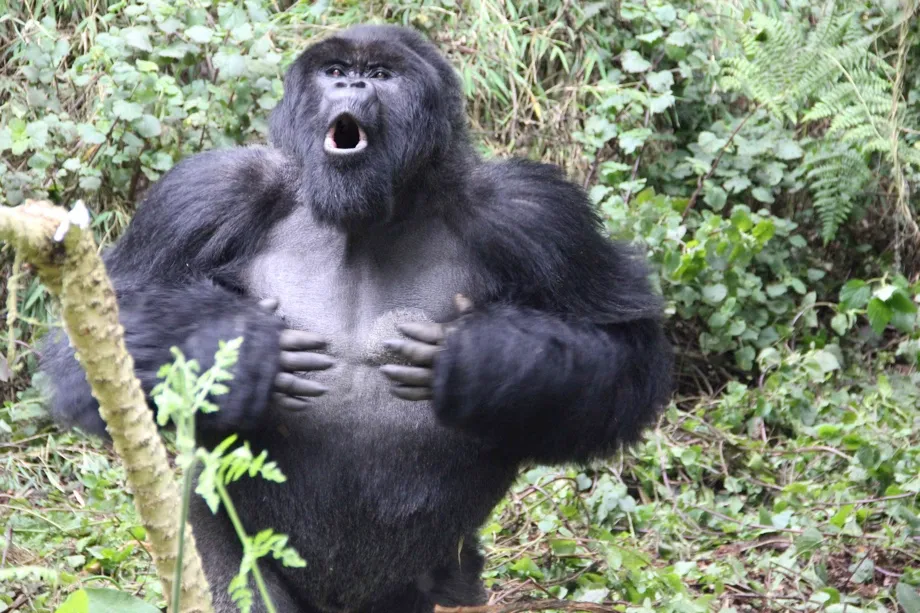It is thought that mountain gorillas rapidly beat their chests as a way to communicate, but scientists now believe these drumming sounds may also reveal how big they are.
Researchers in Germany found that audio frequencies of the chest beats made by larger males were “significantly lower” than those made by smaller males, thus revealing clues about their body size.
Chest beating may help gorillas to assess the fighting ability of rivals or even to intimidate their foes (though King Kong's chest beats wouldn't help him to defeat Godzilla, according to our expert).Female gorillas, on the other hand, are likely to use the information to find potential mates.
Read more about gorillas:
- Gorillas: The bigger the groups, the weaker the friendships
- South African vets take CT scan of 210kg gorilla
As part of a study published in the journal Scientific Reports, a research team observed and recorded 25 wild adult male silverback gorillas at Volcanoes National Park in Rwanda.
The researchers calculated the body size of each gorilla by measuring the distance between shoulder blades.
Audio recordings enabled the authors to measure the duration, number and audio frequencies of 36 chest beats made by six male gorillas. They found that the chest beats of larger males had lower peak frequencies than smaller ones.
The researchers believe that larger males may have bigger air sacs near their voice box, which may be lowering the frequencies of sound they produce while chest beating.
“The gorilla chest beat is one of those iconic sounds from the animal kingdom, so it is great that we have been able to show that body size is encoded in these spectacular displays,” said Dr Edward Wright, the first author of the study from the Max Planck Institute for Evolutionary Anthropology in Leipzig.

The experts said they also observed variations in the duration and number of chest beats made by different gorillas – which were not related to body size.
The team believes these variations may allow individual gorillas to be identified across the dense forests where it can be difficult for them to see one another.
“This hints at the possibility that chest beats may have individual signatures, but further study is needed to test this,” said Wright.
Reader Q&A: Could an ape play rock, paper, scissors?
Asked by: Pad Scanlon
In 2017, researchers in Japan and China revealed that they’d taught five chimps the rudiments of rock,paper,scissors by showing them pairs of gestures on a touchscreen, and then giving them food treats when they picked the winning one. The chimps first learned that paper beats rock, then that rock beats scissors and finally that scissors beats paper.
Later, when the chimps were shown paired pictures randomly, they picked the winning sign 9 times out of 10, putting them on a par with a four-year-old child. The chimps weren’t making the gestures themselves, though, so we don’t know if they’d have the dexterity to actually play it.
Read more:
